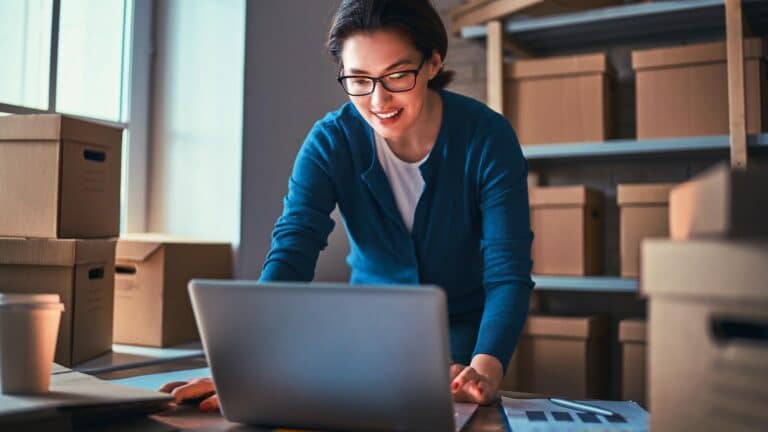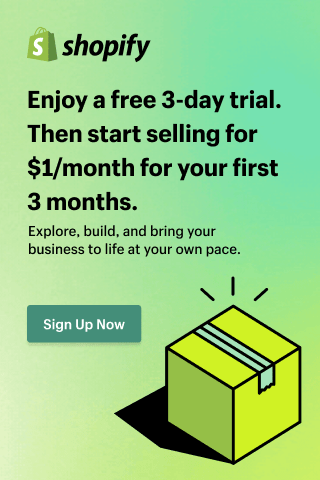In the world of dropshipping, finding ways to attract a loyal customer base can make all the difference. This is where influencer marketing shines. Pairing your dropshipping business with the right influencers can supercharge brand awareness, increase sales, and give your brand credibility.
Influencers bring a human touch to your product, making it relatable and desirable. But how do you leverage influencers effectively, especially when the competition is fierce?
This comprehensive guide will take you through everything you need to know to get started, from understanding the power of influencer marketing and its role in dropshipping to developing a successful influencer strategy tailored to your business.
Table of Contents
The power of influencer marketing
The rise of social media has given power to a new form of marketing where influencers—whether they’re mega stars or micro influencers—share products with their followers. That’s one way of describing what influencer marketing actually is.
And influencer marketing has become a multi-billion-dollar industry with remarkable reach and impact. Influencers, from celebrities to nano creators, now play a critical role in how brands connect with audiences. To showcase all these, here are some stats highlighting the immense power of influencer marketing today.
According to Statista, the global influencer marketing market was valued at $21.1 billion in 2023, having tripled since 2019. This explosive growth underscores how brands view influencer partnerships as essential to driving awareness and engagement.
Platforms like TikTok, Instagram, and YouTube have become go-to spaces for influencer marketing. Khabane Lame currently ranks as TikTok’s most-followed creator with over 160 million followers. Yet, it’s not just about follower counts; micro-influencers on platforms like TikTok often see high engagement rates, sometimes surpassing those of mega-influencers.
Despite TikTok’s rising popularity, Instagram maintains a significant foothold in influencer marketing. After experiencing a brand value boost post-pandemic, Instagram continues to evolve, allowing influencers to promote products through photos, Stories, Reels, and even a designated shopping tab. Brands post, on average, five sponsored posts weekly, contributing to the platform’s influencer market value of $17 billion as of 2023.
Meanwhile, YouTube continues to attract marketers due to its high engagement and extensive video length options. Mid-to-large-tier influencers with followings between 100,000 and one million tend to achieve the highest engagement on the platform. Influencer marketing on YouTube is known for its high production value, with sponsored content often costing upwards of $2,500 per video, easily reaching five-figure costs for larger campaigns.
According to The State of Influencer Marketing Benchmark Report 2024, influencer marketing is expected to grow further, with some eye-catching statistics:
- 85% of surveyed marketers believe influencer marketing is highly effective, reflecting a rise in confidence over previous years.
- The influencer marketing industry is projected to reach $24 billion by the end of 2024.
- 60% of marketers who budget for influencer marketing plan to increase their spending over 2024.
- A notable shift towards smaller influencers, as 44% prefer nano-influencers and 26% prefer micro-influencers, compared to 17% for macro-influencers and 13% for celebrities.
- TikTok remains the most popular platform, used by 69% of brands, with Instagram following at 47%, YouTube at 33%, and Facebook at 28%.
- The primary goal for 56% of brands running influencer campaigns is to create User-Generated Content (UGC), with direct sales at 23% being a secondary objective.
These figures reveal not just the growth of influencer marketing but also how brands increasingly value authentic, relatable content over traditional advertising tactics. As businesses continue to allocate more of their marketing budgets to influencer partnerships, we can expect even more innovation and impact from this evolving marketing strategy.

Why use influencers in dropshipping?
In case all the data above hasn’t convinced you yet, here’s why influencer marketing works so well for dropshipping too.
- Trust and credibility: Followers tend to trust influencer recommendations because they feel authentic. By tapping into this trust, you can quickly build credibility.
- Targeted reach: Influencers allow you to reach specific demographics that align with your product’s target audience.
- Increased engagement: Influencer content often has higher engagement rates than traditional ads. People are more likely to watch, comment, and even share influencer posts.
- Social proof: Seeing a product endorsed by someone popular creates a sense of social proof, making others more inclined to make a purchase.
For dropshipping businesses, influencers provide an accessible and effective way to promote products without the huge budgets associated with traditional advertising.
Read more: Dropshipping vs. Affiliate Marketing: Which One is Right for You?
Types of influencers and which ones to choose
There are four main categories of influencers, each offering distinct benefits:
- Nano influencers (1K – 10K followers): These influencers have smaller, close-knit communities. They tend to have high engagement rates, making them ideal for niche products.
- Micro Influencers (10K – 100K followers): With a moderate following, micro influencers strike a balance between reach and engagement. They often specialize in specific niches, making them perfect for targeting a defined audience.
- Macro influencers (100K – 1M followers): These influencers can help increase brand awareness on a larger scale. They reach more people but may have slightly lower engagement rates.
- Mega influencers (1M+ followers): These are your celebrity influencers. They’re excellent for massive brand exposure but can be costly. Their broad reach is ideal for widely appealing products, but they may lack niche targeting.
For most dropshipping businesses, micro and nano influencers tend to offer the best return on investment due to their affordability and high engagement.
Steps to create an influencer marketing strategy for your dropshipping business
1. Define your goals
Are you aiming to increase brand awareness, drive traffic to your store, boost sales, or grow your social media following? Each goal will affect the type of influencer you choose and how you measure success.
- Brand awareness: Go for influencers with a larger following.
- Traffic and sales: Choose influencers with proven engagement in your niche.
- Social media growth: Opt for influencers with a dedicated audience and authentic connections.
Having a clear goal in mind will guide your selection process and help you analyze performance.
2. Find the right influencers
Finding the right influencers takes research. Here’s how you can start:
- Use social media: Platforms like Instagram, TikTok, and YouTube allow you to search within your niche hashtags to find popular influencers.
- Influencer marketplaces: Websites like AspireIQ, Influencity, or Grin offer a convenient way to find influencers by niche, reach, and engagement. Check out the best influencer marketing platforms in 2024.
- Competitor analysis: Study your competition. Which influencers do they work with, and are they successful in doing so?
- Direct outreach: If you have a specific influencer in mind, reaching out directly via email or social media is often effective.
Remember, numbers alone aren’t everything. Look for influencers who align with your brand’s values, voice, and style.
3. Structure your collaboration
Once you’ve chosen an influencer, it’s time to decide on the type of collaboration. Here are some popular methods for influencer partnerships:
- Product reviews: Send influencers your product for them to try and share an honest review. Authenticity is key here, as followers can detect insincerity.
- Giveaways: Giveaways attract high engagement and draw attention to your brand. Pairing with an influencer for a joint giveaway can exponentially increase reach.
- Discount codes and affiliate links: Offer influencers unique discount codes or affiliate links that they can share with their followers. It’s an excellent way to track sales generated by the influencer.
- Unboxing videos: These videos offer a “first-look” experience, where influencers share the unboxing of your product. They’re engaging and help customers visualize the product experience.
Each type of collaboration serves a different purpose, so tailor your partnership according to your goals.
4. Define a budget
Budgeting for influencer marketing can be tricky since rates vary based on an influencer’s reach, engagement, and niche. To avoid overextending your resources, start small. Here are a few ways to keep costs down:
- Gifting: Some nano and micro influencers accept free products in exchange for a post.
- Performance-based pay: Offer a commission on each sale they generate. Affiliate links and discount codes are useful for tracking this.
- Collaborations: Collaborate with multiple micro-influencers instead of a single macro-influencer. You may end up with more reach and engagement for a fraction of the cost.
A carefully structured budget will ensure that you see a positive return on investment without overspending.
Tracking and measuring success
To understand if your influencer strategy is working, track the following metrics:
- Engagement rate: Likes, comments, shares, and saves reflect how well the content resonates with followers.
- Website traffic: Use tools like Google Analytics to see if there’s an increase in visits to your store from influencer posts.
- Conversions and sales: Track any sales generated from influencer partnerships using unique discount codes or affiliate links.
- Follower growth: Monitor your social media profiles to see if you’re gaining new followers as a result of influencer collaborations.
Analyzing these metrics will help you assess whether your strategy is meeting its goals and where there’s room for improvement.

Pros and cons of using influencers in dropshipping
Before making the decision to go for influencer marketing, consider these pros and cons too.
Pros:
- Builds trust: Influencers add credibility to your brand.
- Targeted audience: You can reach niche markets directly.
- Increases engagement: Influencers encourage active follower interaction.
- Scalable: You can start with micro-influencers and scale up.
Cons:
- Costly: Influencers with high reach can be expensive.
- Uncertain results: Not every campaign will succeed.
- Dependent on influencer’s reputation: Any scandal or bad publicity surrounding the influencer could harm your brand.
While influencer marketing can be a powerful tool, it’s essential to weigh these pros and cons and decide if it’s a sustainable strategy for your business.
Read more: Advanced SEO Strategies for Dropshipping Websites (Easy to Apply)
Tips for working with influencers
- Respect their creative process: Influencers know their audience better than anyone, so give them creative freedom.
- Communicate clearly: Lay out expectations, deadlines, and deliverables in a contract to ensure everyone is on the same page.
- Be transparent about payment: Influencers appreciate clarity regarding compensation. Be upfront about whether you’re offering cash, commission, or free products.
- Nurture relationships: Treat influencer partnerships like any other professional relationship. A happy influencer is more likely to become a long-term brand ambassador.
Case study of an influencer marketing campaign: tentree
Tentree is a purpose-driven apparel and lifestyle brand on a mission to make a positive environmental impact. For every item sold, tentree plants ten trees, with an ambitious goal of reaching 1 billion trees planted globally.
Goal
Initially, tentree’s influencer marketing efforts focused on traditional sponsored posts featuring high-quality, professionally created content. However, as their customer base grew into a community of eco-conscious advocates, tentree recognized the value of tapping into user-generated content. They partnered with nano and micro-influencers who shared their mission, aiming to create more authentic, relatable content that resonated with followers and encouraged eco-friendly shopping. Of course, they also hoped to drive both sales and community support toward their tree-planting goal.
Execution
Tentree collaborated with a wide network of like-minded creators, many of whom were enthusiastic about supporting an environmental mission. These influencers helped tentree reach new audiences, promoting products in genuine, everyday settings rather than stylized, branded photos. The campaign used discount codes and affiliate links to track which influencers were most effective at generating sales.
Results
Tentree saw impressive results from this influencer campaign:
- A 13x return on investment (ROI) through influencer partnerships.
- Over 1,000 sales conversions attributed to influencers.
- More than 800 pieces of user-generated content, each amplifying tentree’s message and encouraging others to join the movement.
Tentree’s success demonstrates how brands with strong missions can amplify their message through carefully selected influencers who genuinely align with their values.
For more examples of successful influencer campaigns, check out this article.
Conclusion
Influencer marketing can have an immense impact on your dropshipping businesses if done right. By choosing the right influencers, setting clear goals, and analyzing your results, you can transform your business through authentic, engaging influencer campaigns.
Remember, the key to success lies in creating genuine connections with influencers who align with your brand values and understand your target audience.
With a solid influencer marketing strategy, you’ll be well-equipped to build brand awareness, grow customer trust, and boost sales in a way that feels natural and impactful.
So, ready to start building your influencer network and take your dropshipping business to new heights?











